 Divide the first term of the dividend by the first term of the divisor, and write the result as the first term of the quotient. Multiply the whole divisor by the first term of the quotient, and subtract the product from the dividend. Divide the first term of the dividend by the first term of the divisor, and write the result as the first term of the quotient. Multiply the whole divisor by the first term of the quotient, and subtract the product from the dividend.  Elementary Algebra - Page 106by George William Myers, George Edward Atwood - 1916 - 338 pagesFull view Elementary Algebra - Page 106by George William Myers, George Edward Atwood - 1916 - 338 pagesFull view - About this book
 | Warren Colburn - Algebra - 1828 - 330 pages
...compound numbers. .Arrange the dividend and divisor according to the powers of some letter. Divide the first term of the dividend by the first term of the divisor, and write the result in the quotient. Multiply all the terms oftlie divisor by the term of the quotient... | |
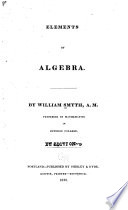 | William Smyth - Algebra - 1830 - 278 pages
...Having arranged the divisor and dividend with reference to the powers of the same letter, 1°. Divide the first term of the dividend by the first term of the divisor, the result will be the first term of the quotient ; 2°. multiply the whole divisor by the term of... | |
 | Alexander Ingram - Mathematics - 1830 - 458 pages
...compound, arrange the terms of the dividend and divisor according to the powers of the same letter. Divide the first term of the dividend by the first term of the divisor to obtain the first term of the quotient, then multiply the whole divisor by this term, and subtract... | |
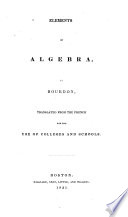 | Bourdon (M., Louis Pierre Marie) - Algebra - 1831 - 326 pages
...figures of the quotient are obtained by trial, while in algebraic division the quotient obtained by dividing the first term of the dividend by the first term of the divisor, is always one of the terms of the quotient sought. If these two terms are not divisible by one another,... | |
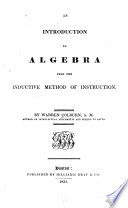 | Warren Colburn - Algebra - 1834 - 288 pages
...compound numbers. Arrange the dividend and divisor according to the powers of toms letter. Divide t/ie first term of the dividend by the first term of the divisor, and write the result in the quotient. Multiply all the terms of the divisor by the tern of the quotient... | |
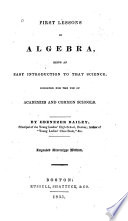 | Ebenezer Bailey - Algebra - 1835 - 258 pages
...3ic + 2cc ( J + 2 c. 1 bb+ be 2 6c + 2cc 2 6c + 2cc . In this example, as in the preceding, we divide the first term of the dividend by the first term of the divisor. The quotient of 6 6 divided by b, is b. We then multiply the whole divisor, b + c, by b, and obtain... | |
 | Silas Totten - Algebra - 1836 - 332 pages
...arranged wkh reference to the powers of a. The first term of the quotient will therefore be found by dividing the first term of the dividend by the first term of the divisor. 2. As the dividend is the sum of all the partial products formed by multiplying the divisor by each... | |
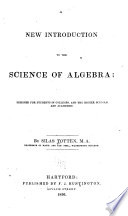 | Silas Totten - Algebra - 1836 - 320 pages
...produces the second dividend. The whole of the root found being doubled, gives 8ae -(- 24аж for a second divisor. Dividing the first term of the dividend by the first 'term of this divisor, gives 9.Г* for a quotient, which is also added to the divisor, and the sum multiplied... | |
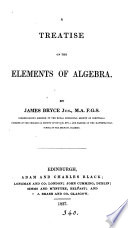 | James Bryce - Algebra - 1837 - 322 pages
...both, so that its highest power may stand first, its next highest power second, and so on ; 3° divide the first term of the dividend by the first term of the divisor; the quantity found is the first term of the quotient; 4° multiply this term into the divisor, and,... | |
 | Thomas Grainger Hall - 1840 - 266 pages
...dividend according to the powers of the same letter, beginning with the highest power in each. Divide the first term of the dividend by the first term of the divisor, and set down the quotient by itself: multiply every term of the divisor by this quotient, and subtract... | |
| |